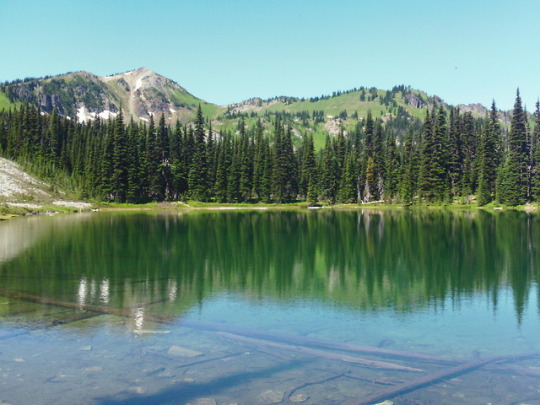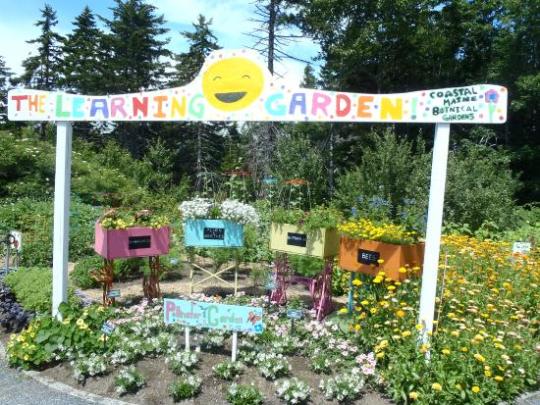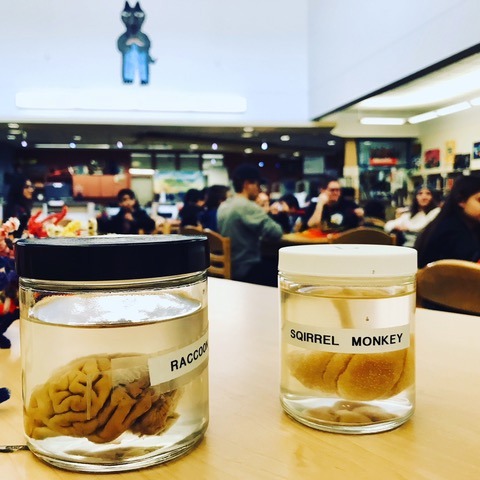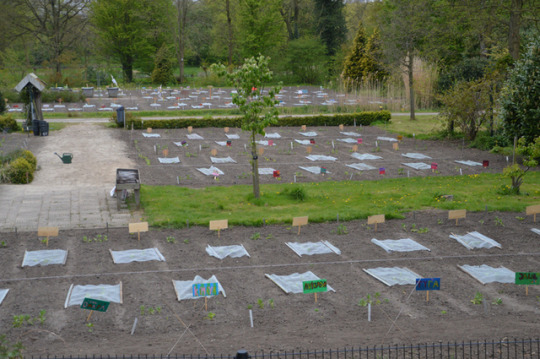#portlandstateresearch
Photo

Jack Straton, Physics and University Studies faculty, had one of his photographs chosen to be part of the South Cobb Arts Alliance 31st Annual National Juried Art Exhibition, Aug. 11–Sept. 19, 2018, in Smyrna, Ga.
3 notes
·
View notes
Photo

Aaron Roussell, Sociology faculty, and graduate student Wynn Strange co-authored “Final Report to the Oregon Law Foundation on the Legal Needs of Impoverished Oregonians” for the Oregon Law Foundation, Oregon Bar Association.
2 notes
·
View notes
Photo

Cynthia Carmina Gómez, Cultural Resource Centers, co-authored and co-produced the play “Voz Alta: Generaciones.”
She interviewed two local community workers, transcribed six hours of material, produced written narratives and assisted in the development of a final theatrical adaptation. Voz Alta is a bilingual storytelling project in its 10th year featuring the personal lives of Portland’s Latino community through interwoven narrative and live music. The play was performed at Miracle Theater in August 2018 and at Portland State University in January 2019.
1 note
·
View note
Photo

Vicki Reitenauer, Women, Gender, and Sexuality Studies faculty, authored a poem, "The Group," published in the January/February 2019 issue of The Women's Review of Books.
1 note
·
View note
Photo

With support from a grant by Oregon’s Department of Environmental Quality, PSU’s Community Environmental Services unit is partnering with Oregon Green Schools to pilot a wasted food reduction program with Title 1 schools in Multnomah County.
1 note
·
View note
Text
Hidden in Plain Sight: Findings From a Survey on the Multi-major Professional Writing Course
Sarah Read, faculty in English, co-authored, "Hidden in Plain Sight: Findings From a Survey on the Multi-major Professional Writing Course," in Technical Communication Quarterly, May 2018.
Abstract: In this article, we report on findings from a survey of writing instructors who teach the multi-major professional writing course (MMPW) across diverse institutional contexts. We marshal these findings to advance a series of arguments about the situation of the MMPW course in U.S. higher education.
1 note
·
View note
Photo

NW Noggin (Northwest Neuroscience Outreach Group: Growing in Networks), a group with close ties to PSU that brings scientists and artists together to inform the public about neuroscience research, will receive a Regional Arts & Culture Council Juice award for providing atrs integrated neuroscience education to the public on Thursday, March 1, 2018.
4 notes
·
View notes
Photo

Angela Strecker (Environmental Science and Management) and Jeffery Brittain (Environmental Science and Management Master’s graduate) co-authored “The Interactive Effect of Multiple Stressors on Crustacean Zooplankton Communities in Mountane Lakes” published in Water Resources Research. The study identified responses of zooplankton communities from two lakes (fish present vs. absent) in Mount Rainier National Park to manipulations simulating an episodic disturbance of acidification and eutrophication via nitrogen addition in mesocosms.
Abstract
Non-native fish introductions have altered thousands of naturally fishless montane lakes, resulting in cascading food web repercussions. Nitrogen deposition has been recognized as an anthropogenic contributor to acidification and eutrophication of freshwater ecosystems, which may affect the abundance and composition of planktonic communities. This study identified responses of zooplankton communities from two lakes (fish present vs. absent) in Mount Rainier National Park to manipulations simulating an episodic disturbance of acidification and eutrophication via nitrogen addition in mesocosms. Zooplankton communities from lakes with different food web structure (i.e., fish present or absent) responded differently to the singular effects of acid and nitrogen addition. For instance, zooplankton biomass decreased in the acid treatment of the fishless lake experiment, but increased in response to acid in the fish-present experiment. In contrast, the combination of acid and nitrogen often resulted in weak responses for both lake types, resulting in non-additive effects, i.e., the net effect of the stressors was in the opposite direction than predicted, which is known as a reversal or ‘ecological surprise'. This experiment demonstrates the difficulty in predicting the interactive effects of multiple stressors on aquatic communities, which may pose significant challenges for habitat restoration through fish removal.
5 notes
·
View notes
Photo

Dilafruz Williams, Education faculty; Judy Bluehorse Skelton, Indigenous Nations Studies faculty; Sybil Kelley, Education faculty; and others co-authored, "Learning Gardens for All: Diversity and Inclusion" published in The International Journal of Sustainability in Economic, Social, and Cultural Context, Vol. 13, No. 4, pp. 41-63.
1 note
·
View note
Photo

PSU students bring brain research and art to Eastern Oregon. PSU's own Emily Weiss (Applied Psychology) will present her graduate research on sleep and school, along with innovative mural artist Jamaali Roberts - at Velo Cult on Thursday, March 1 (6-8pm)
1 note
·
View note
Photo

Sybil Kelley and Dilafruz Williams, GSE faculty, and graduate students and staff from PSU's Learning Gardens Laboratory presented a workshop, "Science in the Learning Gardens: Bringing the NGSS (Next Generation Science Standards) to Life for Middle School Students," at the Oregon Farm to School and School Garden Summit in January. Williams also co-presented a workshop, "Honoring Diversity and Equity: Culturally Responsive Practices in the School Garden," at the summit.
1 note
·
View note
Photo




Images from EXTRACURRICULAR: The Buildings, Speculations, and Research of Faculty at PSU School of Architecture
Extracurricular reveals design research—projects, investigations, and buildings—by a selection of faculty at Portland State University School of Architecture. While the classroom becomes a shared space of exploration for both teacher and student, the interests, fascinations, and practice agendas of individual faculty make up an integral part of the identity of the school. The work that is presented here broadens the disciplinary horizons of architectural education through extracurricular means.
#portland state university#portlandstateresearch#psuresearch#psucota#psuarchitecture#psusustainability
2 notes
·
View notes
Photo


In Nepal, Jeremy Spoon, anthropology professor, and collaborators from Nepal and the US recently facilitated a national workshop bringing together community members, elected officials, and international and national Non-Governmental Organizations to share personal experiences and the findings Spoon and fellow researchers have collected from communities affected by the 2015 earthquakes in Nepal’s Gorkha and Rasuwa Districts. A recent article highlighting the workshop was published at the website Nature Khabar: http://naturekhabar.com/en/archives/7745. Read more about Spoon’s research in Nepal in the article “Drawing Lessons from a Catastrophe at “the Roof of the World.”
#portland state university#portlandstateresearch#psuresearch#psuclas#psuanthropology#psusustainability
2 notes
·
View notes
Photo

Mark Weislogel, mechanical and materials engineering faculty member, recently received the 2017 Space Processing Award from the American Institute of Aeronautics and Astronautics. The award is presented for significant contributions in space processing or in furthering the use of microgravity for space processing. Reactivated in 2007, this award is presented biennially (in odd-numbered years) generally at the American Society for Gravitational and Space Research (ASGSR).
#portland state university#portlandstateresearch#psuresearch#psumcecs#psumechanicalandmaterialsengineering
1 note
·
View note
Photo

Feeling the Fall time blues? Not enough sunlight? Come and see a talk about the role that Vitamin D plays in regulating seasonal responses in animals.
2017-2018 Research Rounds
Speaker Series Presents
Dr. Jason Podrabsky, Professor, Biology
Tuesday, November 14, 2017
12pm-1pm
Smith Memorial Student Union (SMSU), 298
Free and open to all! Bring your lunch and learn more about research at PSU.
The celestial movements of the Earth and Moon and the resulting predictable seasonal changes profoundly influenced the evolution of life on earth. Thus, it is not surprising that most organisms have mechanisms to sense and respond to seasonal cues such as photoperiod and temperature. Vitamin D, which fungi, algae, flowering plants, and a variety of animals synthesize using these mechanisms in combination with sunlight, is a potent signaling molecule of ancient origin. In humans, vitamin D plays an essential role in calcium homeostasis, control of the cell proliferation, immune function, and development of the heart and brain. Vitamin D acts through the vitamin D receptor, which can regulate the expression of hundreds and perhaps thousands of genes simultaneously. Vitamin D signaling, as was recently discovered, controls seasonal dormancy in embryos of annual killifish. Other animals that employ dormancy to survive unfavorable conditions have similar molecular pathways. Dr. Podrabsky hypothesizes these ancient pathways have evolved to integrate environmental cues into significant life history decisions across a diversity of animals.
1 note
·
View note
Photo

OPB Think Out Loud: Restoring Artwork With Chemistry
Listen to the story on OPB.
You can learn a lot about artwork by doing a chemical analysis. PSU chemistry professor Tami Lasseter Clare just got a grant from the Mellon Foundation to study artwork at five different museums in the Northwest- it’s the first time many of those institutions will have access to a conservation scientist.
1 note
·
View note